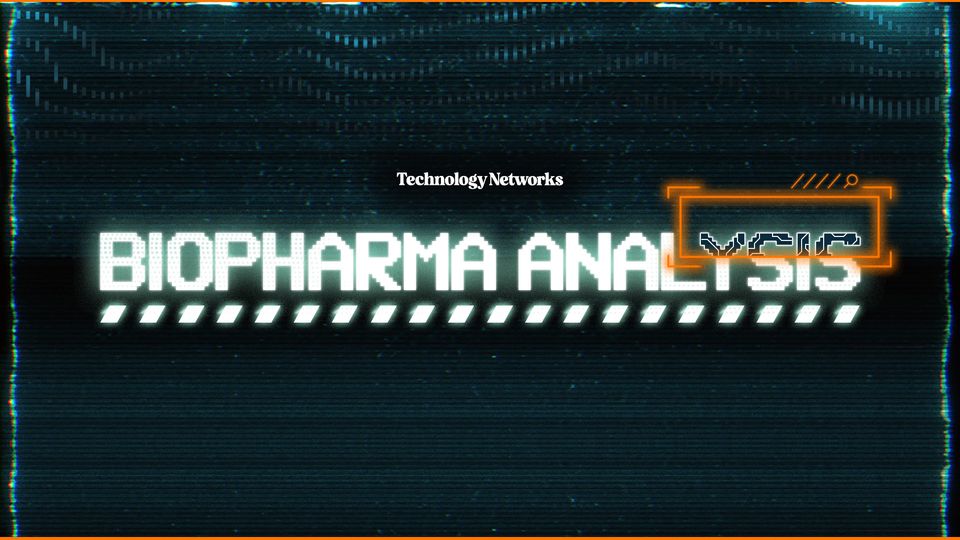Biopharma Analysis
Infographic
Published: December 20, 2023
|
Karen Steward, PhD


Karen Steward holds a PhD in molecular microbiology and evolutionary genetics from the University of Cambridge. She moved into science writing in 2017 after over a decade as a research scientist.
Learn about our editorial policies

Credit: Technology Networks
Biopharmaceuticals come in many forms, from monoclonal antibodies (mAbs) and recombinant therapeutic proteins, to DNA vaccines and cell therapies. They are important for combatting a whole host of diseases and keeping the population healthy.
However, in order for scientists to develop and refine these therapeutics and ensure their safety and efficacy, it is important that they are analyzed at every stage of their lifecycle.
Download this infographic to explore:
- Why it is important to analyze biopharmaceuticals
- Some of the methods commonly used
- What these analyses can tell us
137592
4
8
6
Biopharmaceuticals come in many forms, from monoclonal antibodies (mAbs) and recombinant therapeutic
proteins, to DNA vaccines and cell therapies. They are important for combatting a whole host of diseases and
keeping the population healthy. However, in order for scientists to develop and refine these therapeutics
and ensure their safety and efficacy, it is important that they are analyzed at every stage of their lifecycle.
This infographic will explore why it is important to analyze biopharmaceuticals, some of the methods
commonly used and what they can tell us.
The analysis of biopharmaceuticals is imperative at every stage of their lifecycle, from development and testing,
through scale up and manufacture to shelf-life determination and storage. This helps to ensure quality, efficacy
and safety, providing scientists with information on factors such as composition, structure and function.
Biopharmaceuticals can come with a unique set of analytical challenges compared to small molecule
pharmaceuticals related to their size, physical characteristics, micro-heterogeneity and the fact that many
are derived from biological processes that can introduce their own contaminants, such as HCPs.
Analytical techniques for biopharmaceuticals may vary depending on the specific product and the
information needed. A combination of methods is typically used to characterize and control the quality
of biopharmaceuticals throughout their development and production lifecycle. Let’s consider some of the
commonly used techniques.
Characterization
Biopharmaceuticals often have complex
structures, alterations of which can
impact activity, effectiveness and safety.
Characterization of structural properties
such as protein folding, binding and
post-translational modification (PTMs)
such as glycosylation, phosphorylation
and lipidation, is therefore vital from
the early stages of candidate selection
through to the analysis of final products.
Biosimilarity
If a new biopharmaceutical product is
intended to be a substitute for an existing
one (biosimilar), extensive analytical
testing is required to demonstrate that
it is a suitable alternative in terms of its
similarity, safety and efficacy.
Stability testing
Environmental factors such as light,
temperature and pH can all contribute
to physical and chemical changes in a
product. Monitoring over time helps to
ensure it remains effective and safe for
the duration of its intended shelf life.
Batch-to-batch
consistency
As many biopharmaceuticals are produced
in batches, it is important to check that
there is no variation in aspects such as
quality, potency and composition from
one batch to the next in order to produce
consistent results.
Post-market
surveillance
Even after product launch, ongoing testing
is necessary to assess the long-term safety
and efficacy to identify unexpected issues
or changes in product quality or longevity.
Mass spectrometry
Mass spectrometry (MS) measures the mass-to-charge ratio (m/z) of atoms and/
or molecules in a sample and can be used to determine the exact molecular
weight of the components present, both desirable and undesirable.
Matrix-assisted laser desorption/ionization MS (MALDI-MS) can provide
information on the intact mass and composition of proteins and peptides,
enabling simultaneous detection and identification.
MALDI-time-of-flight (TOF)/TOF MS can be used to assess isomerization in
biotherapeutics such as mAbs. Isomerization is a critical quality attribute (CQA) that
requires careful control and monitoring during the discovery and production process,
as unwanted structural changes can negatively impact potency, safety and efficacy.
NMR spectroscopy
Nuclear magnetic resonance (NMR) spectroscopy helps to elucidate the 3D
structure of proteins and peptides, as well as study conformational changes and
interactions with ligands or other molecules.
UV-Vis spectroscopy
Ultraviolet-visible (UV-Vis) spectroscopy is a popular technique based on the
optical properties of species within a sample. It can offer insights on aspects
such as purity, concentration and intermolecular interactions at all stages of
development and manufacturing.
Capillary electrophoresis
Capillary electrophoresis (CE) separates charged molecules using an electric
field, enabling the quantitative determination of biopharmaceuticals and
identification of impurities.
Microscopy
Aggregates of biotherapeutics such as mAbs can be detected using microscopy
techniques including optical, electron and atomic force microscopy.
Cryo electron microscopy (cryo EM) helps to examine a broad range of
biological structures, facilitating the visualization otherwise difficult or complicated
biologics relevant to biopharmaceutical targeting and development.
Liquid chromatography
Various forms of liquid chromatography (LC) are used to analyze biopharmaceuticals,
to determine molecular weight, identity, homogeneity and purity.
These include:
• Size-exclusion chromatography (SEC)
• Ion-exchange chromatography (IEC)
• Affinity chromatography
Compared to other sample types, the conditions required for LC of
biopharmaceuticals can be harsh in terms of factors such as pH and salt content.
Therefore, the instruments used need to be sufficiently robust.
Surface interactions can also be potentially problematic and therefore bio-inert
coatings can help to prevent this.
LC paired with MS (LC-MS) has become one of the essential tools for in-depth
characterization of protein biopharmaceuticals.
Immunoassays
Immunoassays like the enzyme-linked immunosorbent assay (ELISA) and
western blot can be used to quantify and detect the presence of specific
proteins and/or antibodies, both desirable and undesirable. HCP contamination
is routinely tested for using an ELISA. Immunochemical procedures such as
these can help to establish the homogeneity, purity, identity and quantity
of a therapeutic protein.
Binding assays with therapeutic antibodies can also help to determine avidity,
affinity, immunoreactivity and identify potential cross-reactivity.
Polyacrylamide gel electrophoresis
Sodium dodecyl sulphate-polyacrylamide gel electrophoresis (SDS-PAGE)
and native PAGE can provide information on the molecular weight and size of
the proteins present, assess purity, abundance and identify aggregation issues.
Two-dimensional (2D) electrophoresis can be used to separate out proteins
that comigrate, identifying potentially contaminating HCPs that may otherwise
be masked by the target.
X-ray crystallography
X-ray crystallography can provide helpful structural insights for protein biotherapeutics;
however, protein purity must be high to resolve structures successfully.
Other useful techniques include:
• Circular dichroism (CD) spectroscopy
• Differential scanning calorimetry (DSC)
• Analytical ultracentrifugation
• Potency assays
• Biological assays
• Protein sequencing
Pharmacokinetics
and pharmacodynamics
In order to pick the best candidates
and optimize treatment and dosing
regimens, understanding how the
body interacts with biopharmaceuticals
(pharmacokinetics), including how they
are absorbed, distributed, metabolized
and eliminated (ADME) and their effects
on the body (pharmacodynamics)
requires extensive analyses.
Quality control
Biologics must meet specific quality
requirements to ensure they are free
from contaminants and impurities, such
as host cell proteins (HCPs), isoforms,
degraded product and aggregates, which
may otherwise impact product safety,
performance and dosing. They must also
have the intended composition and activity.
Process optimization
By monitoring key parameters,
adjustments can be made to improve
yield, reduce production costs and
enhance quality and consistency.
Regulatory compliance
As part of the drug approval process,
extensive analytical data is required by
authorities such as the US Food and
Drug Administration (FDA) and the
European Medicines Agency (EMA),
demonstrating they are safe for use
and meet required standards.
Why do we analyze
biopharmaceuticals?
What methods are used
to analyze biopharmaceuticals
and what do they tell us?
Download the Infographic for FREE Now!
Information you provide will be shared with the sponsors for this content. Technology Networks or its sponsors may contact you to offer you content or products based on your interest in this topic. You may opt-out at any time.

